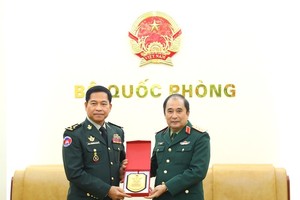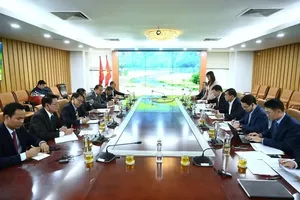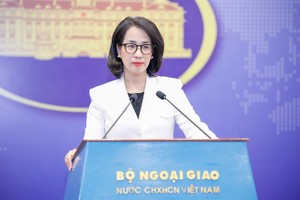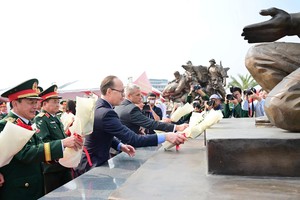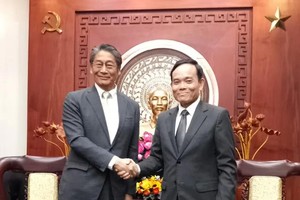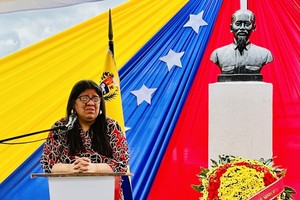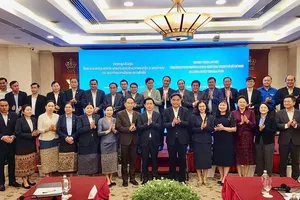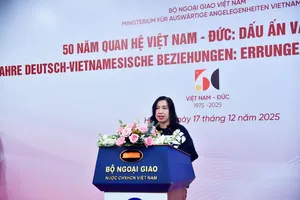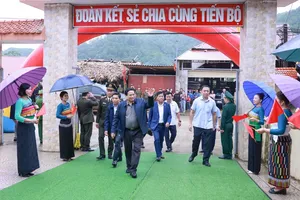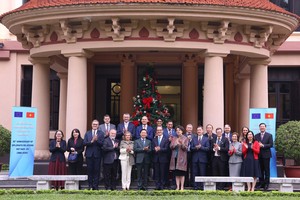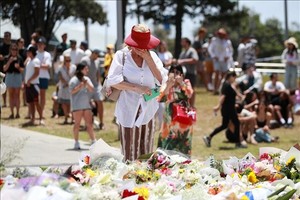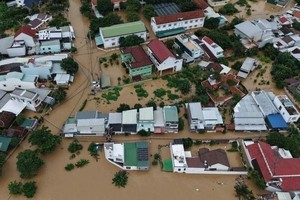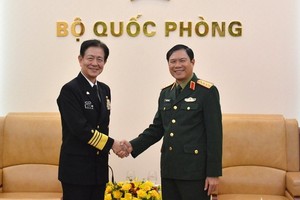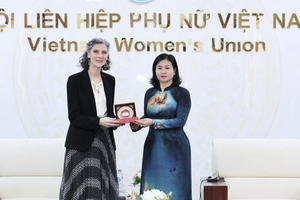Osama bin Laden cut himself off from direct access to the Internet during his final years in Pakistan as he attempted to elude the CIA. But the terror group he founded has been able to seize the power of the Web to spawn an army of online followers who will prolong al-Qaida's war against the West long after his demise.
Al-Qaida's technological evolution illustrates how much the group has changed since the Sept. 11, 2001, attacks and why it has flourished despite America's decade-long quest to crush it, using everything from drone strikes in Pakistan to secret prisons in Eastern Europe where bin Laden's lieutenants were interrogated.
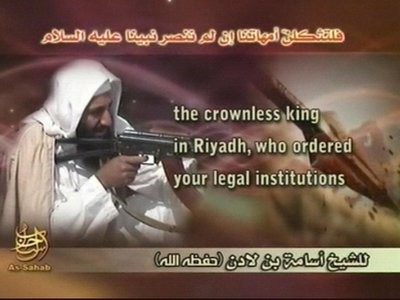
The U.S. scored its biggest victory in that war on May 2, when U.S. Navy SEALs shot and killed the 54-year-old terror leader during a daring late-night helicopter raid not far from Pakistan's capital.
His death was undoubtedly a blow to al-Qaida, but the group's diffuse, virtual network lives on in militant chatrooms and on social media sites like Facebook and YouTube, where supporters carry forward bin Laden's message and plan the kind of bloody attacks that were his hallmark.
"While bin Laden's death has certainly been lamented within the jihadist community, al-Qaida's copious media over the past 10 years have ensured that bin Laden's videos, speeches, and ideas will continue to incite jihadists all over the world," said Rita Katz, head of the U.S.-based SITE Intelligence Group that monitors Islamic militant messages online.
Unlike its Afghan Taliban allies, who banned television when they were in power, al-Qaida has never rejected modern technology and recognized the importance of an online presence before Sept. 11. But its early efforts were fairly rudimentary. Since then, the group and its affiliates have exploited the Internet to rally and connect supporters, and are very quick to adopt new technology.
Al-Qaida's media production arm, As-Sahab, now produces videos that look like professionally edited documentaries or television news broadcasts that are distributed by Al-Fajr, the group's online media organization, to major militant websites. The videos, which often contain flashy computer graphics, are then uploaded to scores of other sites by al-Qaida supporters.
"Despite extensive counterterrorism success against the group responsible for 9/11, the al-Qaida `brand' now resonates with an increasingly diverse (though still narrow) cross-section of Muslims around the world," said a recent report by the U.S.-based Center for Strategic and International Studies.
Members of the cell who bombed Madrid's commuter train system in 2004 and killed nearly 200 people were radicalized with the help of the Internet, as was U.S. Army Maj. Nidal Hasan, who is suspected of shooting to death 13 people at Fort Hood, Texas, in 2009.
Jarret Brachman, a terrorism expert who has spent nearly a decade monitoring al-Qaida's Internet and media operations, said a confluence of events in 2004 and 2005 turbocharged the group's efforts and helped shape the network in place today.
In May 2004, al-Qaida in Iraq leader Abu Musab al-Zarqawi videotaped himself beheading kidnapped American businessman Nicholas Berg and released the tape on an al-Qaida-linked website.
Younis Tsouli, a young Morocco-born computer expert who lived in Britain, took the video and uploaded it scores of times to other Internet sites, earning him a rare "shout-out" from al-Zarqawi's propaganda minister, said Brachman. This prompted other al-Qaida supporters online to do the same with other videos, creating a powerful new distribution chain, he said.
"Younis Tsouli became the archetype of what the jihadist online supporter might look like," said Brachman. "That some random dude could get a shout-out from a real-deal al-Qaida guy woke everyone up to think that maybe there is a bridge here, maybe I can help the cause."
Tsouli was eventually sentenced to 10 years in prison for running a network of extremist websites and possessing al-Qaida videos, but he helped spawn hordes of "jihobbyists" who spread the terror group's message online and also began creating content themselves, said Brachman, who served as the research director at West Point's Combating Terrorism Center and now works as an independent consultant.
Al-Zarqawi's gruesome videos of beheadings and terrorist attacks in Iraq also had significant influence by creating a new genre of militant propaganda, said Katz. Other al-Qaida-affiliated groups emulated his style, "increasing the quantity and raising the quality of jihadist propaganda to new levels of sophistication."
Bin Laden's No. 2, Ayman al-Zawahri, who is believed to be hiding in Pakistan, watched al-Zarqawi's rising profile with concern, worried he was "stealing all the propaganda thunder" from al-Qaida's central command, said Brachman. That caused him to intensify al-Qaida's own video effort through As-Sahab.
"You could tell there was a lot more bureaucratic focus and concentration on releasing videos that didn't suck," said Brachman.
Al-Zawahri was helped by senior al-Qaida leader Abu-Yahya al-Libi's escape from Bagram prison in Afghanistan in July 2005, said Brachman. Al-Libi had served as the Taliban's webmaster and was one of the leading thinkers in al-Qaida about the use of media and the Internet, he said.
"It took off, and they never looked back," said Brachman.
There are now tens of thousands of members on the half-dozen most important and exclusive online password-protected chatrooms, "fostering a movement that is at once decentralized but hierarchical," said Katz.
Al-Qaida and its supporters have used the Internet to disseminate a wide array of new media, including video games, rap videos and comic books to project an image of "jihadi cool" and attract young, tech-savvy supporters, said the report released by CSIS in February.
"YouTube videos and online chatrooms now help disseminate (al-Qaida's) ideology to far-flung audiences, thus reducing the importance of in-person interaction as a driver of radicalization," said the report. "This development only adds to the diffusion and complexity of global Islamist terrorism: Policymakers must now counter extremism in virtual, rather than merely physical, realms."
A Facebook page titled "We Are All Usama Bin Laden" was created on the site hours after President Barack Obama announced the al-Qaida chief's death, said the SITE Intelligence Group. The page attracted more than 10,000 supporters in less than 24 hours, it said, but appears to have been removed since then.
Hundreds have also expressed support for bin Laden on the main al-Qaida website currently in operation, Al-Shumoukh.
"You lived as a hero and died as a martyr," wrote one user, identified as Ibnat Shumoukh al-Islam.
Al-Qaida has also made strides in covering its tracks online. Al-Fajr published at least two issues of an electronic magazine called "Technical Mujahid" in 2006 and 2007 that outlined how to encrypt files and hide messages in images. The magazine advocated using encryption software written by jihadists called "The Mujahideen Secrets."
Bin Laden pursued another strategy to avoid detection while living for at least five years in Abbottabad, the Pakistani army town where he was eventually killed by U.S. Navy SEALs. His compound didn't have a phone line or Internet connection, and he relied on a pair of trusted couriers to feed him information and disseminate his messages and e-mails on small flash memory drives, U.S. officials have said.
The al-Qaida chief was taken out despite his caution, but his army of online supporters will be much harder to eradicate.
"The Internet is proving to be the ultimate safe haven," said Brachman.

